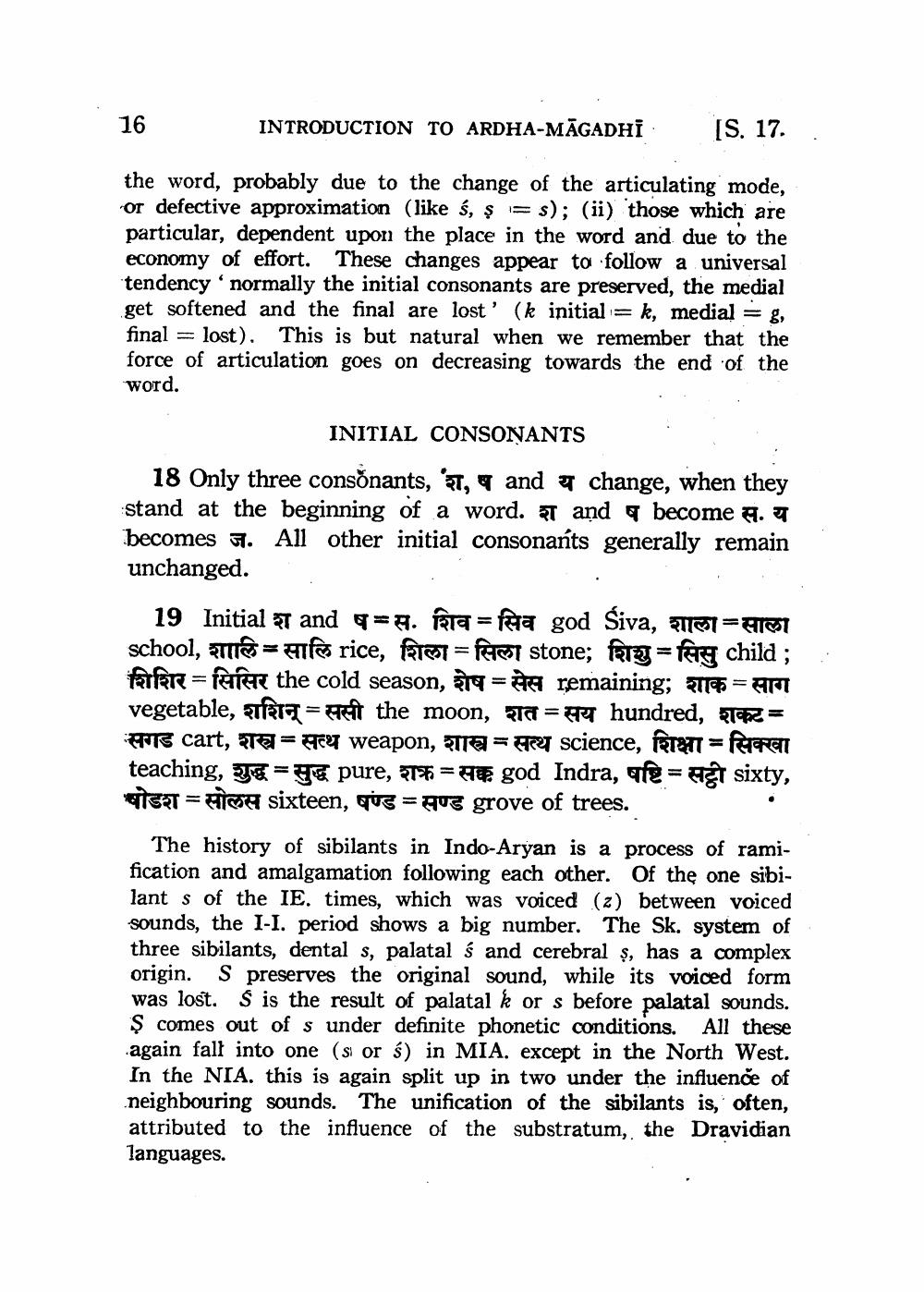________________
16
INTRODUCTION TO ARDHA-MĀGADHI
[S. 17.
the word, probably due to the change of the articulating mode, or defective approximation (like ś, s = s); (ii) those which are particular, dependent upon the place in the word and due to the economy of effort. These changes appear to follow a universal tendency 'normally the initial consonants are preserved, the medial get softened and the final are lost' (k initial = k, medial = g, final = lost). This is but natural when we remember that the force of articulation goes on decreasing towards the end of the word.
INITIAL CONSONANTS 18 Only three consonants, 37, 4 and a change, when they stand at the beginning of a word. 7 and a become A T becomes J. All other initial consonants generally remain unchanged.
19 Initial 37 and q=2. Fra = feta god Siva, 101=AVCI school, Te = mifs rice, f1 = ferest stone; fory=fag child ; farfar = for the cold season, na = remaining; 1719 = ARI vegetable, sufera = it the moon, ta = hundred, 12 =
E cart, TE= TEU weapon, a = Rat science, Te = fere teaching, शुद्ध सुद्ध pure, शक्र सक्क god Indra, षष्टि = सट्ठी sixty, 152T = Fine sixteen, aus = que grove of trees.
The history of sibilants in Indo-Aryan is a process of ramification and amalgamation following each other. Of the one sibilants of the IE. times, which was voiced (z) between voiced sounds, the I-I. period shows a big number. The Sk. system of three sibilants, dental s, palatal ś and cerebral ș, has a complex origin. S preserves the original sound, while its voiced form was lost. S is the result of palatal k or s before palatal sounds. $ comes out of s under definite phonetic conditions. All these again fall into one (s or ś) in MIA. except in the North West. In the NIA. this is again split up in two under the influenőe of neighbouring sounds. The unification of the sibilants is, often, attributed to the influence of the substratum, the Dravidian languages.




